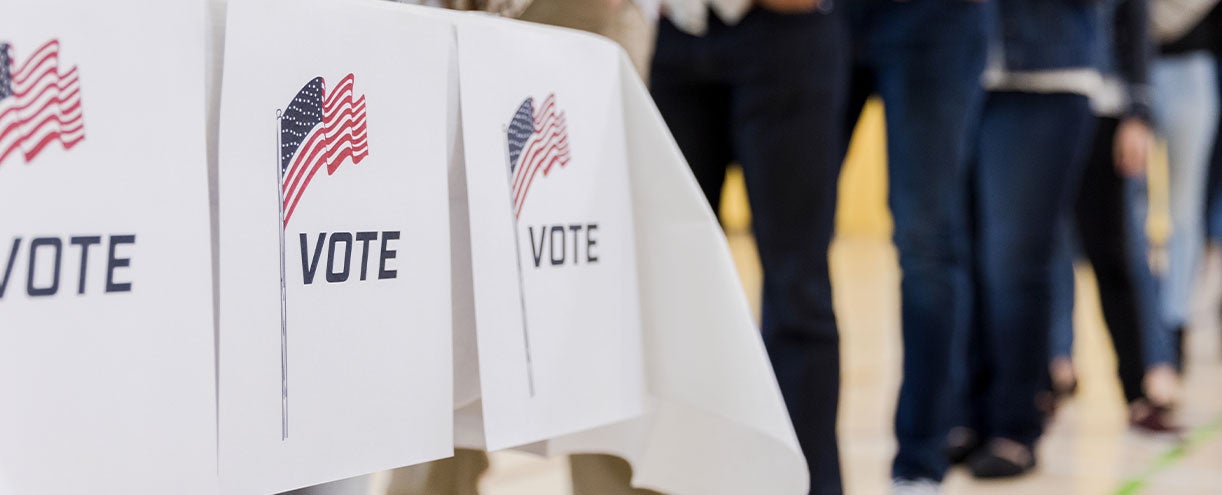Tech Challenges: Today and Beyond
There is no doubt that technology has broadened educational experiences for students and will continue to do so. But those opportunities come with ongoing challenges for both school boards and district administrators across the state.
Joy Baskin, education counsel and associate executive director of TASB Policy and Legal Services, says that the prevalence of cell phones on campus and the influence of social media are among some of the thorniest issues for both students and educators.
“Research shows that constant distraction and the developing mind’s response to the highs and lows of social media is taking a toll on students’ health and readiness to learn,” Baskin said. “That’s not to say that technology cannot be a meaningful part of instruction — it must be — but the educational environment is definitely more challenging now. Educators have had to deal with secret recordings being shared online, fights staged for social media, cyberbullying, viral safety threats, and sexting, just to name a few issues.”
Some schools across Texas and the country are trying to minimize those distractions by implementing new “phone-free” policies to improve the learning environment and help students stay focused on instruction.
Among the many challenges of managing student conduct in a digital environment, however, is knowing the scope of the school district’s jurisdiction, Baskin said.
“Proving student digital misconduct often requires legal advice about how to avoid an unlawful search and do a proper forensic investigation,” she explained. “If social media posts over the weekend have a negative impact on the school environment, are district administrators empowered to step in?” She cited a recent U.S. Supreme Court case about a cheerleader’s weekend Snapchat posts criticizing the cheerleading program. The Court’s decision that the district lacked jurisdiction to discipline for the off-campus speech left administrators uncertain about when they can address students’ potentially disruptive or harassing off-campus statements about other students, employees, or the school itself.
School board members are also feeling uncertainties about conducting their own business in a digital world. During the pandemic, many school boards met online for the first time, following special remote meeting rules under the Texas Open Meetings Act. The remote meetings gave the community a chance to watch board meetings from home, and even after pandemic precautions ended, the public has continued to have an appetite for streaming or viewing recorded school board meetings.
“This level of public access has increased community interest in board operations, which is beneficial, but can also present legal and logistical challenges if a large number of citizens want to address the board,” Baskin said. Board members also must be cautious about their personal use of technology while serving as public officials, as social media posts and text messages about school business have implications under the OMA and the Public Information Act.
Other evolving technological challenges for school districts include a growing number of cybersecurity threats and navigating the potential benefits and pitfalls associated with artificial intelligence.
As the largest provider of risk management services to educational entities in Texas, the TASB Risk Management Fund is seeing growing interest in its cybersecurity program, which not only provides coverage for participating members but also essential training to protect against threats and attacks.
“Public schools are a popular target for cyber criminals because they have a lot of data and may not always have the resources to protect against those who want to steal, disrupt, or extort,” said Mary Barrett, associate executive director of TASB Risk Management Services. “A primary focus for us is to provide training, coverage, and claim services to help members improve their cybersecurity resilience and prevent these attacks.”
Cybersecurity is also a big concern for school trustees, who are required to have training on the subject. Contracts that school boards sign for educational technology must be written to protect student privacy and prohibit the commercial use of student information.
“This year, the Texas Education Agency released suggested guidelines for school boards that issue school-owned devices and software applications,” said Baskin. “These guidelines emphasize student data privacy, protection of students from inappropriate content, and security for the school district’s technology infrastructure.”
Even as school districts grapple with the challenges posed by cyberthreats, they will need to address the emerging issues being posed by artificial intelligence.
“AI will present new opportunities for efficiency and individualized learning, but AI will also make it harder to encourage independent learning and monitor for academic honesty,” said Baskin. “AI and deep fake content will be an additional challenge for monitoring and disciplining for student and employee misconduct and protecting student safety.”
Yet AI is already bringing some benefits to school districts that are using it to bolster their security efforts, through enhanced screening and video monitoring.
Karlyn Keller, TASB’s division director of Student Solutions and School Medicaid Services, also sees the unlimited potential of AI to assist students regardless of their learning styles, special needs, language proficiency, or family supports.
She cited the example of a student being able to interact with AI to improve understanding of a math concept or historical event, especially if they are doing homework or don’t otherwise have an adult who can easily provide help. “At its best, AI is enhancing our expertise, not replacing our experience,” she said.
Keller noted that AI should always be a collaborative experience with its human users, saying, “In the AI journey, human insight remains the compass.”
Melissa Locke Roberts
Melissa Locke Roberts is a staff writer for Texas Lone Star.
Sylvia Wood
Sylvia Wood is the division director of communications for TASB.





